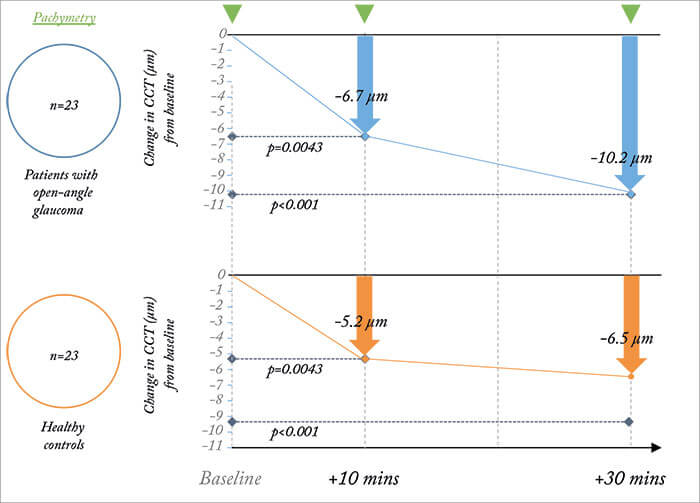
It has long been known that corneal thickness influences intraocular pressure (IOP) measurements, which may be underestimated in patients with thinner central corneal thicknesses (CCTs), and overestimated in those with thicker CCT (1). This observation forms part of the reason why most glaucoma specialists add in a pachymetric assessment in addition to tonometry when assessing patients. Glaucoma is an age-related disease, with prevalence and severity increasing as patients age. There’s also another factor that increases with advanced age: the number of patients that are bedridden. Might this affect CCT? Maslin et al. (2) assessed whether lying supine had an effect on CCT on patients with open-angle glaucoma (n=23) and healthy controls (n=23) (below). They found that CCT is influenced by body position, that it decreases linearly over a 30 minute period, and at a similar rate in both open angle glaucoma patients and in healthy control subjects.
References
- MO Gordon et al., “The ocular hypertensiontreatment study: baseline factors that predictthe onset of primary open-angle glaucoma”,Arch Ophthalmol, 120, 714–720 (2002).PMID: 1204957. JS Maslin et al., "Effect of supine bodyposition on central corneal thickness", ClinExperiment Ophthalmol, Epub Ahead of Print (2016). PMID: 26991869.
